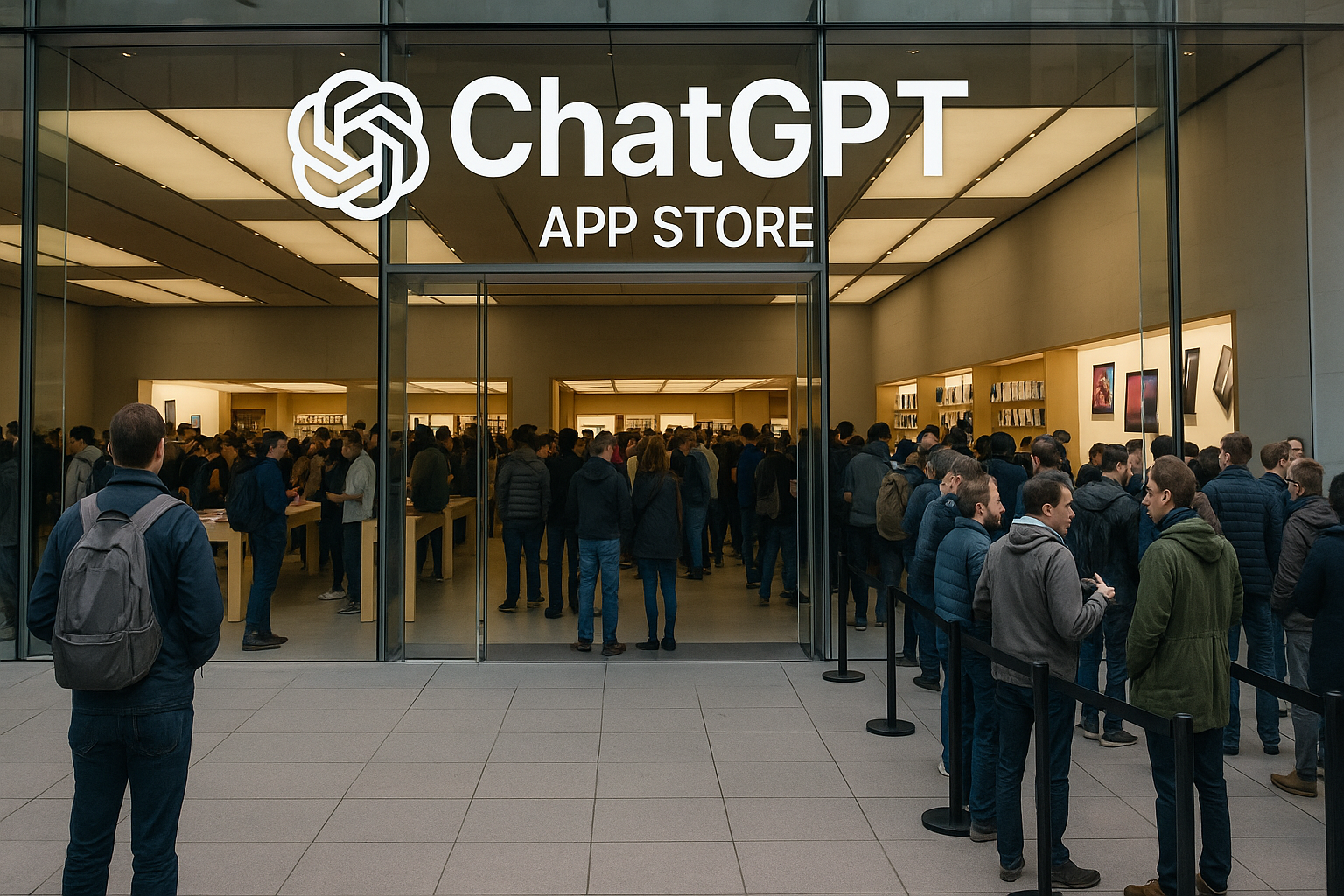The opportunities and headaches of AI
Rob Borley
4 min read • 23 May 2024
GenAI is poised to transform businesses, yet most enterprises are still only dipping their toes in the water. New ways of working and redefining expectations – especially if you’re a pioneer pushing back the boundaries – inevitably come with potential pitfalls. So what steps can enterprise take to reduce risk on the journey of AI adoption and lead teams successfully through the changes AI brings?
AI democratising technology access
Artificial intelligence is not a novel concept; historically it focused predominantly on decision-making processes: determining whether an email is spam, identifying faces in photos, or differentiating between individuals in those images. AI proved to be an invaluable tool in these contexts. However, a groundbreaking shift occurred in recent years with the advent of Generative AI and this new approach, centred on predicting subsequent words, was made possible by an innovative algorithm known as a Transformer. This meant generative AI's capabilities now extend well beyond simple word prediction for blogs or emails.
Transformers enabled the training of AI models on vast amounts of text, leading to a deep understanding of language once a significant portion of internet content was analysed. Large Language Models (LLMs) like ChatGPT have, of course, become notable examples of this technology.
The real marvel lies in these models' ability to grasp the nuances of our language with remarkable accuracy. Requesting an LLM like ChatGPT to craft a JavaScript function that calls a set of APIs and then iterates over the results to locate the user query matches is not only feasible, but the generated code is now deployable. The same LLM can even translate code from one programming language, such as JavaScript, to another, like C#, or interpret Rust code for a C# developer without prior Rust experience using C# concepts to explain each line.
The potential applications of this technology span across an organisation, and while the current focus is on textual content, burgeoning models are now also addressing images, videos and audio. Adopting generative AI technology necessitates a paradigm shift within an organisation. This shift fosters a perception of AI – particularly generative AI – as a tool for significantly enhancing productivity and democratising technology access.
Measuring AI success
As AI technology accelerates and the buzz around new AI tools and services grow daily, it's essential to navigate this evolution thoughtfully. AI significantly shifts how we interact with technology, offering a more natural, intuitive way to engage through language. Beyond the sheer novelty of these tools lies a profound change in mindset: technology is starting to work in a way that mirrors human thought and communication.
In assessing success with this new technology, it's crucial to recognise the productivity gains and consider the positive effects on your team's well-being and job satisfaction. Generative AI boosts efficiency and revitalises the workplace by making tasks more engaging and approachable. For instance, software developers appreciate being able to query an AI without fear of judgement. At the same time, QA testers benefit from defining tests in natural language, reducing errors.
Starts well but then the problems emerge
Many success stories exist as organisations worldwide explore and experiment with this emerging technology. However, it's equally common to encounter recurring pitfalls that often lead to these AI initiatives being abandoned prematurely.
The pattern of engagement typically starts with internal teams experimenting with tools like ChatGPT, followed by hiring consultants who tout generative AI as a transformative solution for the entire business. Encouraged by these promises, businesses conduct proof of concepts within their technology departments, frequently achieving some success. Yet attempts to expand these demos across the wider organisation commonly hit a roadblock when legal and compliance departments, often only informed later, raise concerns. Data usage, privacy, governance, explainability, and security testing usually halt progress due to insufficient preparation and consultation.
Governance and Compliance
Navigating Generative AI's immense capabilities necessitates a robust governance and compliance framework that aligns with organisational and legal standards. Integrating legal and compliance teams from the outset of AI projects rather than as an afterthought lays a solid foundation for responsible use.
So it's essential to establish the right governance structures and secure buy-in from across the organisation to reap the benefits of the potential of evolutionary technologies, such as generative AI. Creating an AI oversight board is an obvious way to do this, ensuring that AI initiatives are aligned with the organisation's data strategy and that access to data is optimised for AI enhancement. This balanced approach facilitates experimentation with new technologies and fosters an environment that is conducive for sustainable integration and growth.
Creating an AI governance framework before diving into data usage discussions ensures a smoother process. An AI board plays a crucial role here, forging consensus and setting necessary boundaries to ensure generative AI's ethical and successful deployment across the enterprise.
Key focus areas include:
- Ethics Audit: Review existing policies to determine the appropriateness of data usage and identify areas requiring updated guidance or new policies.
- Model Transparency and Explainability: For accountability and clarity, AI-driven outcomes should be traced back to their training models and, ideally, to the source data that informed the decision.
- Accountability: Establishing procedures for reporting and adjusting models that generate inappropriate content, including content guardrails and potentially retraining models.
- Legal Considerations: Adhering to organisational ethics codes regarding intellectual property rights, privacy, security, and bias mitigation when using custom and third-party tools.
Governance and compliance are integral to the AI deployment process, requiring collaboration with technology teams to ensure seamless integration. This approach protects the brand and reinforces trust in AI-driven solutions by ensuring they represent the organisation responsibly and align with its values.
It’s in the data
One of the issues that AI often raises is an organisation's relationship to its data. AI has the ability to do extraordinary things with your organisation's data, but not necessarily in a compliant way. Making effective management of data therefore becomes a priority. Many organisations find their data scattered across different silos, which can complicate its use in AI initiatives. Bringing this data together by centralising access or making it more findable and usable is often the first step.
As businesses move from dabbling in AI to embedding it into their core processes, paying close attention to how data is handled becomes critical. This means deep diving into existing data stores to identify and leverage untapped resources. A comprehensive data audit can reveal these hidden gems, laying the groundwork for strong data governance. This is crucial for maintaining data quality and security and ensuring it meets privacy standards and is free from duplicates.
Tools like Azure Data Lake can then step in, helping to catalogue and provide access to this data, thus widening the scope of what's possible with AI within the organisation.
What is the future?
The trajectory of generative AI is promising, and its widespread adoption seems inevitable. As people grow accustomed to and expect AI's personalised enhancements and productivity boosts, we'll see its integration into virtually all our tools and services.
The concept of digital co-workers is becoming more realistic, with AI agents tailored to execute specific tasks or domains. It's not far-fetched to imagine a future, perhaps just five years away, where CTOs or senior engineers outline a project's framework, leaving the finer details, testing, or deployment to a digital AI colleague. This evolution signifies a leap in technological capability and redefines our relationship with work, enabling us to achieve more with our digital counterparts by our side.
AI Assessment
Embarking on your AI journey begins with understanding where you stand today. An AI readiness assessment is the perfect starting point, designed to evaluate your current capabilities and identify areas for integration and growth. We've developed a comprehensive assessment to guide you through this process to help you make the most of this transformative technology. Read more about Azure OpenAI Service or
Book your AI Readiness Assessment
Rob Borley


.png)